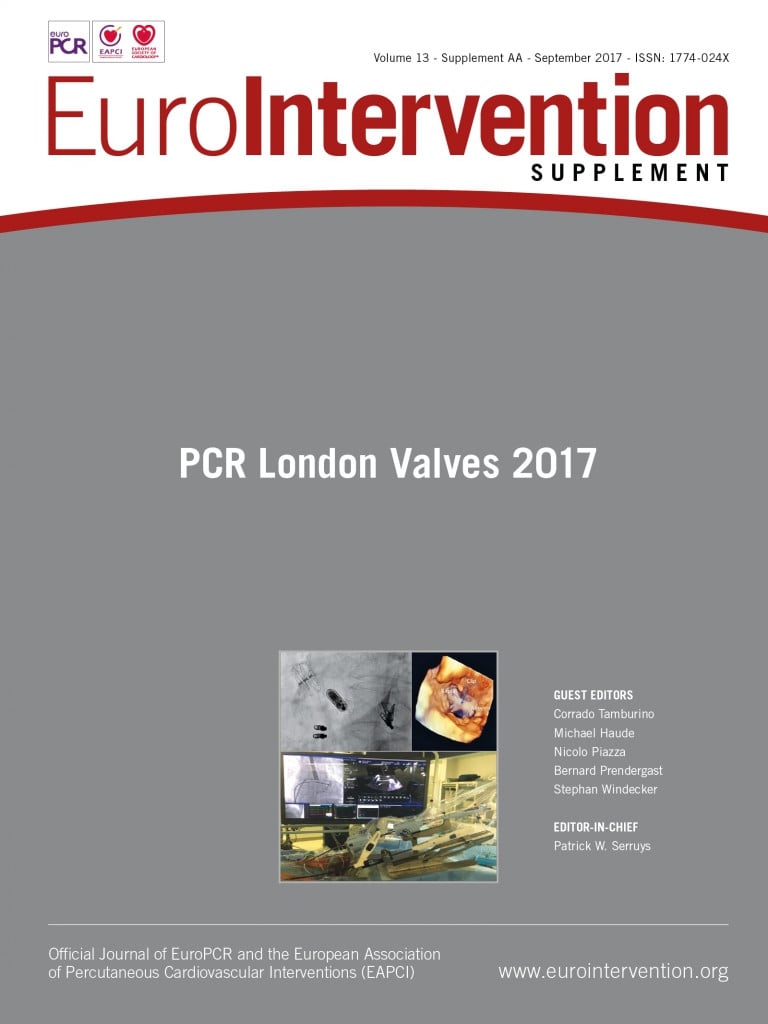In September one of the most exciting meetings organised by the PCR group – PCR London Valves – will once again be taking place, and it is only fitting that we will celebrate the 15th anniversary of the first valve replacement (in conjunction with the 40th anniversary of the first percutaneous treatment) during our time together in London.
This dedicated EuroIntervention supplement, the perfect complement to the meeting itself, spotlights the progress we have made in the valvular field as described by top leaders and international experts and we are very pleased and extremely proud to introduce it.
You will find here a series of nine review articles covering all the major topics in this field. These include reviews of the state of the art individually focusing on the aortic1, mitral2,3 and tricuspid valves4, followed by a fine overview, the “big parade” on emerging devices for percutaneous mitral and tricuspid valves5. We have an historical account by Younes Boudjemline of the development of percutaneous pulmonary valve implantation6. The supplement concludes with papers on restorative valve therapy by endogenous tissue restoration7, a state-of-the-art review on left atrial occlusion8 and another on imaging9.
Alain Cribier revolutionised the field of interventional cardiology in 1986 when he introduced balloon aortic valvuloplasty. At that time, the hype surrounding this new development in cardiology was tremendous, and the anticipation produced early disappointment when it became evident that the treatment was just a transient fix.
Yet, as a true pioneer, Alain Cribier did not accept that this was merely a failure of the device, but rather a personal failure. To counter this, he fought back as only a true inventor and pioneer could, by continuing to pursue his goal to convert this transient fix into a permanent solution.
His persistence and vision paid off and, in 2002, he ushered the interventional community into a new era – the era of valve replacement with an evolved approach encompassing a totally different environment from the first coronary balloon angioplasty. Treating an almost moribund patient on compassionate grounds and succeeding came as a shock to the entire community. Of course, some of our key opinion leaders said at the time that it would not work – that there was no way you could fix a stent cage in a calcified aortic valve and maintain the valve in the correct position. However, one by one these early doubters slowly came round, convinced of the good sense of this therapy and already, by the 2006/2007 EuroPCR, we could see the future potential for this technique.
Our first EuroIntervention supplement on percutaneous valves was guest edited by Alec Vahanian and Arie Pieter Kappetein. By 2006, the inventory of worldwide patients treated by percutaneous valve replacement amounted to around 667 patients. Ten to fifteen years later we are working in a completely different world where literally thousands of patients have benefited from this intervention. In addition, by a quick succession of well-conducted major randomised trials, we have moved from inoperable “compassionate grounds” patients to those at high risk to others at intermediate risk and now, finally, low risk.
The challenges, however, are still there, with durability being a complex issue. If we consider follow-up at five, 10 or 15 years, the process of durability in less elderly patients will be of major interest.
Soon after our focus on the aortic valve, interest shifted to the mitral valve, a field full of surprises and complexity. It is interesting to see that the so-called “forgotten valve”, the tricuspid, is in some ways making more progress than the mitral valve in this latest phase. As usual, PCR London Valves (previously called the “Annual Transcatheter Valve Symposium”) promises to be a very educational forum.
I want to take this opportunity to congratulate the current editors of this supplement – Corrado Tamburino, Marco Barbanti, Bernard Prendergast and Davide Capodanno – for their excellent work in collaborating and creating such a spectacular issue focusing on the past, present and future knowledge of these valves.
Earlier this year, we produced a special issue on coronary percutaneous angioplasty. It seems only fair – and immensely fitting – to create a tribute to the other major anniversary marking interventional cardiology, 15 years of percutaneous aortic valve therapy!

